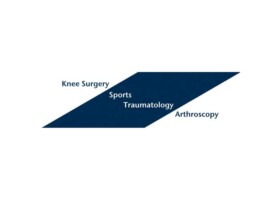
Authors:
Peter J. Millett, Lucca Lacheta, Elmar Herbst, Andreas Voss, Sepp Braun, Pia Jungmann, Andreas Imhoff & Frank Martetschläger
Abstract:
Purpose
Glenoid bone integrity is crucial for shoulder stability. The purpose of this study was to investigate a non-invasive method for quantifying bone loss regarding reliability and accuracy to detect glenoid bone deficiency in standard two-dimensional (2D) and three-dimensional (3D) computed tomography (CT) measurements at different time points. It was hypothesized that the diameter of the circle used would significantly differ between raters, rendering this method inaccurate and not allowing for an exact estimation of glenoid defect size.
Methods
Fifty-two shoulder CTs from 26 patients (26 2D-CTs; 26 3D-CTs) with anterior glenoid bone defects were evaluated by 6 raters at time 0 (T0) and at least 3 weeks after (T1) to assess the glenoid bone defect using the ratio method ("best fit circle"). Inter- and intra-rater differences concerning circle dimensions (circle diameter), measured width of bone loss and calculated percentage of bone loss (length-width-ratio) were compared in 2D- versus 3D-CT scans. The intraclass coefficient (ICC) was used to determine the inter- and intra-rater agreement.
Results
The mean circle diameter difference in 2D-CT was 2.0 ± 1.9 mm versus 1.8 ± 1.5 mm in 3D-CT, respectively (p < 0.01). Mean width of bone loss in 2D-CT was 1.9 ± 1.7 mm compared to 1.7 ± 1.5 mm in 3D-CT, respectively (p < 0.01). The mean difference of bone loss percentage was 5.1 ± 4.8% in 2D-CT and 4.8 ± 4.5% in 3D-CT (p < 0.01). No significant differences concerning circle diameter, bone loss width and bone loss percentage were detected comparing T0 and T1. Circle diameter, bone loss width and bone loss percentage measurements in 3D-CT were significantly smaller compared to 2D-CT at T0 and T1 (p < 0.01). Agreement (ICC) was fair to good for all indicators of circle diameter (range 0.76–0.83), bone loss width (range 0.76–0.86) and percentage of bone loss (range 0.85–0.91). Overall, 3D-CT showed superior agreement compared to 2D-CT.
Conclusion
The ratio method varies in all glenoid parameters and is not valid for consistently quantifying glenoid bone defects even in 3D computed tomography. This must be taken into consideration when determining proper surgical treatment. The degree of glenoid bone loss alone should not be used to decide for or against a bony procedure. Rather, it is more important to define a defect size as "critical" and to also take other patient-specific factors into consideration so that the best treatment option can be undertaken. Application of the "best fitting circle" is a source of error when using the ratio method; therefore, care should be taken when measuring the circle diameter.
